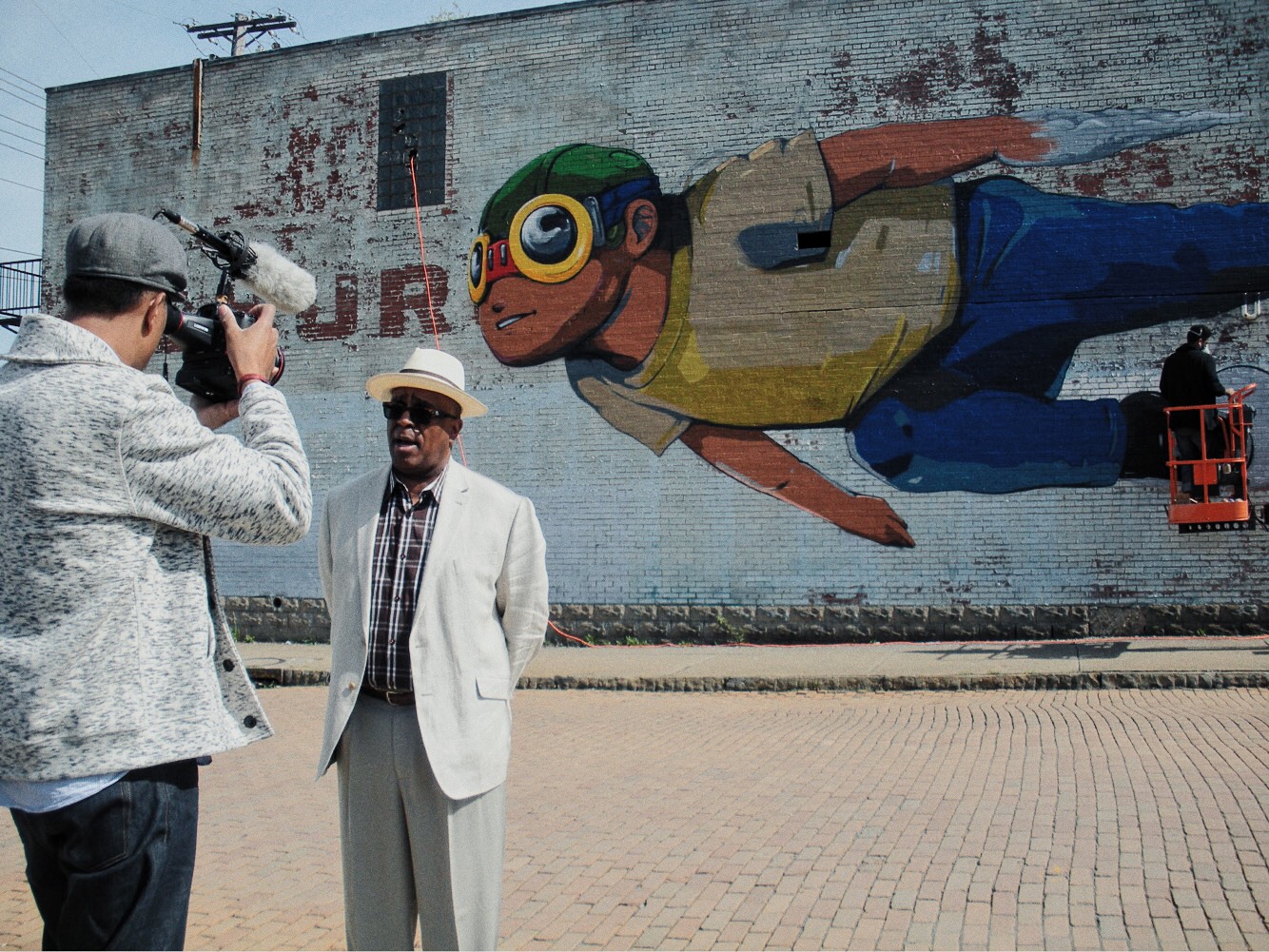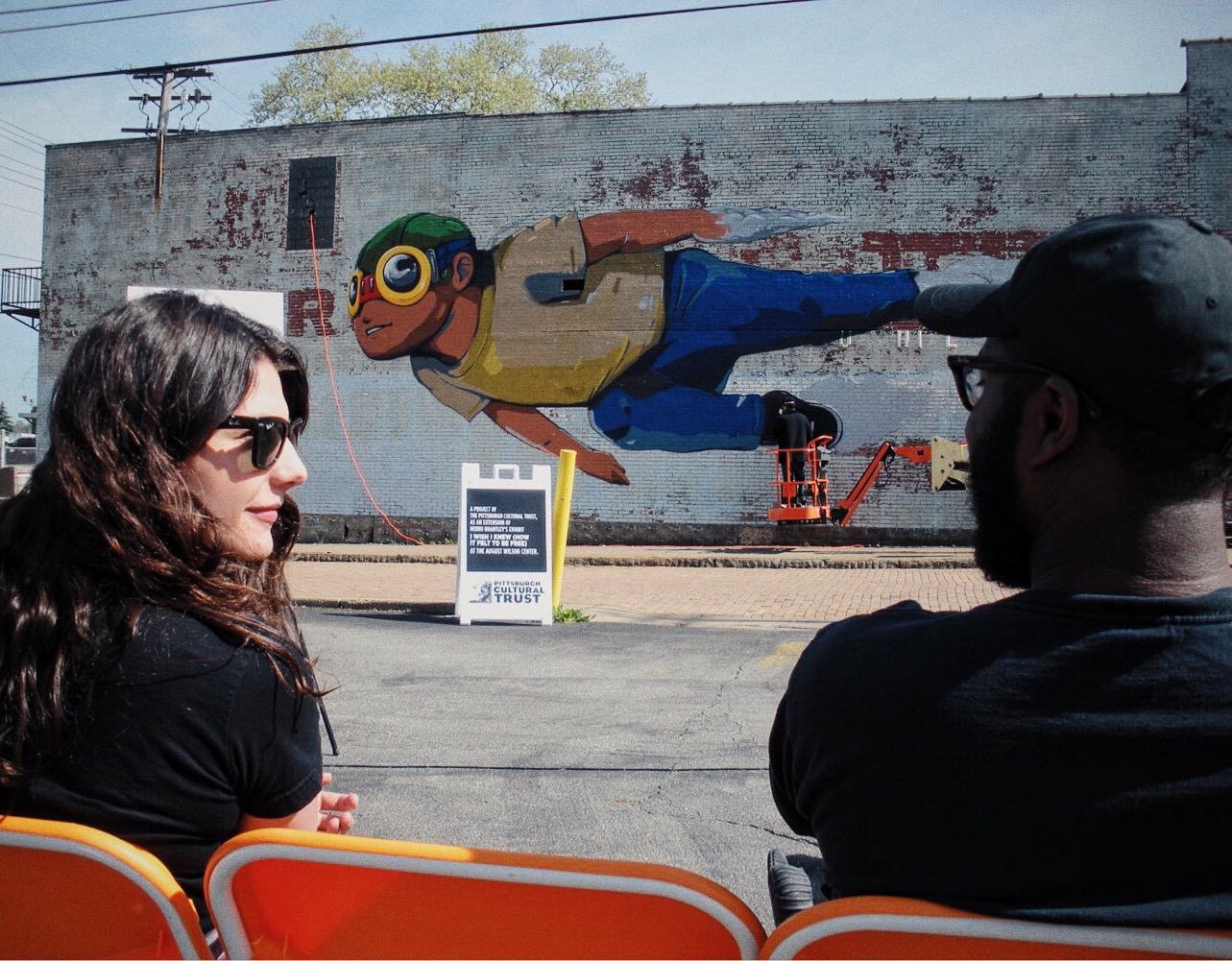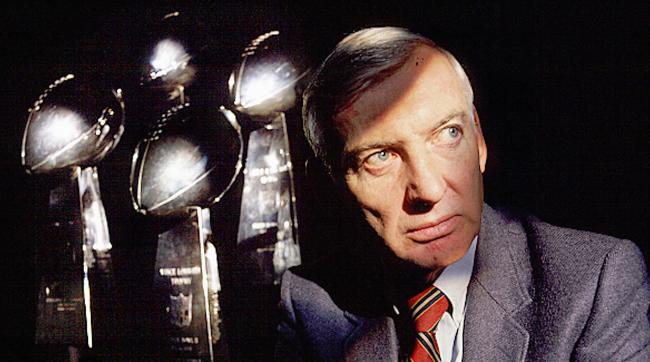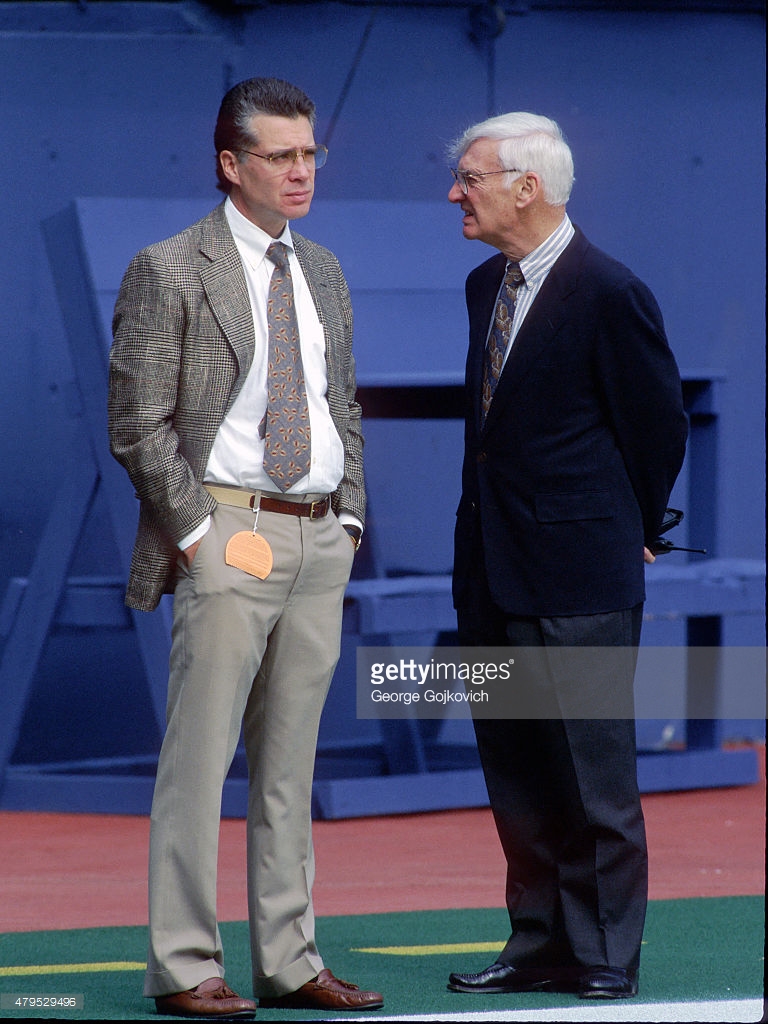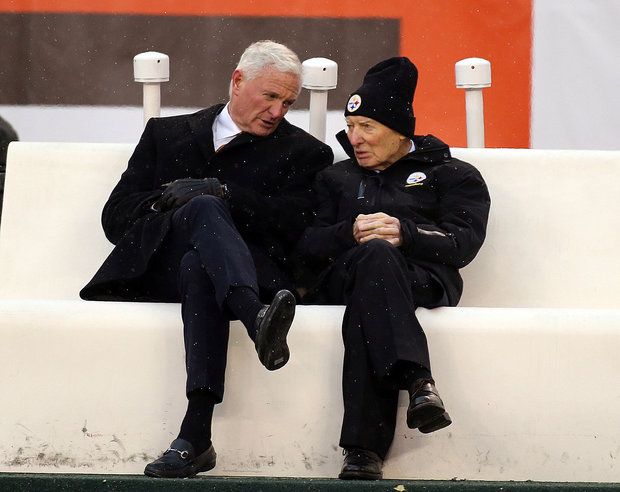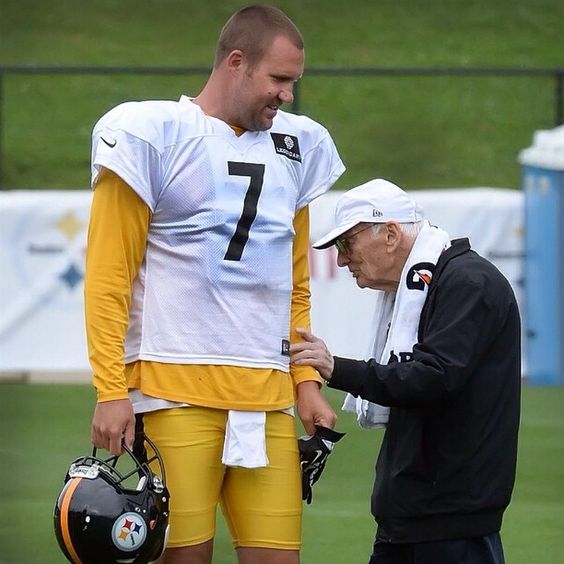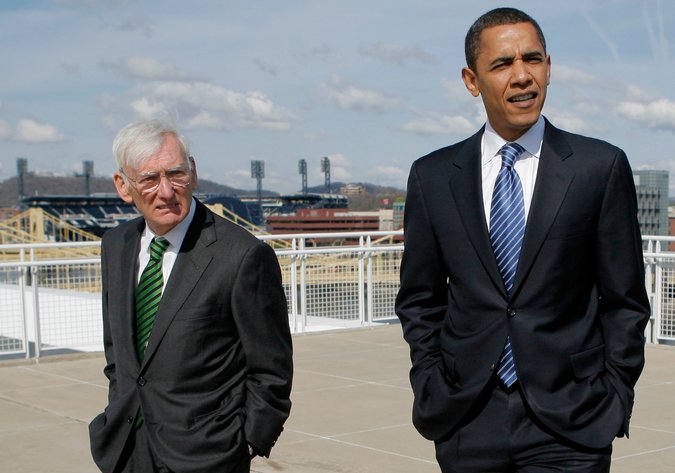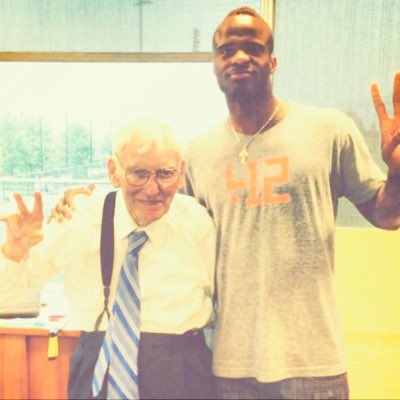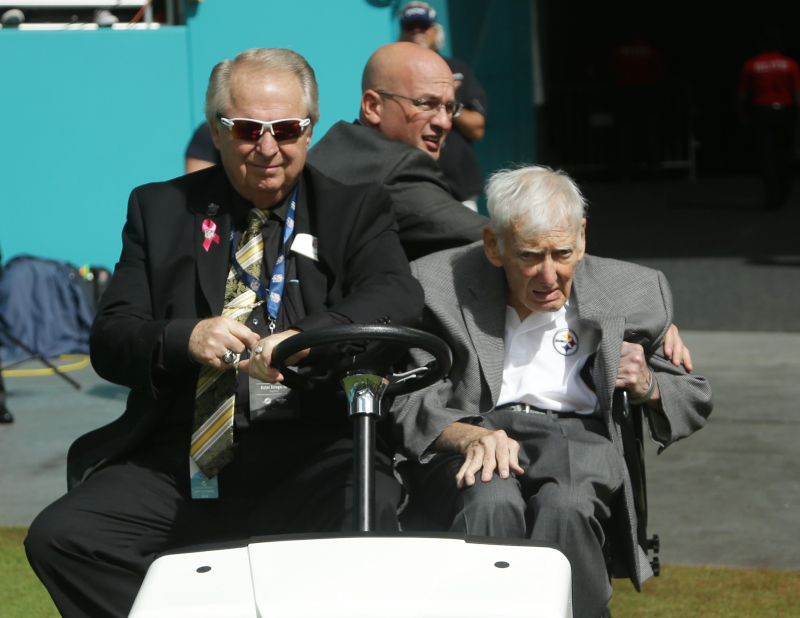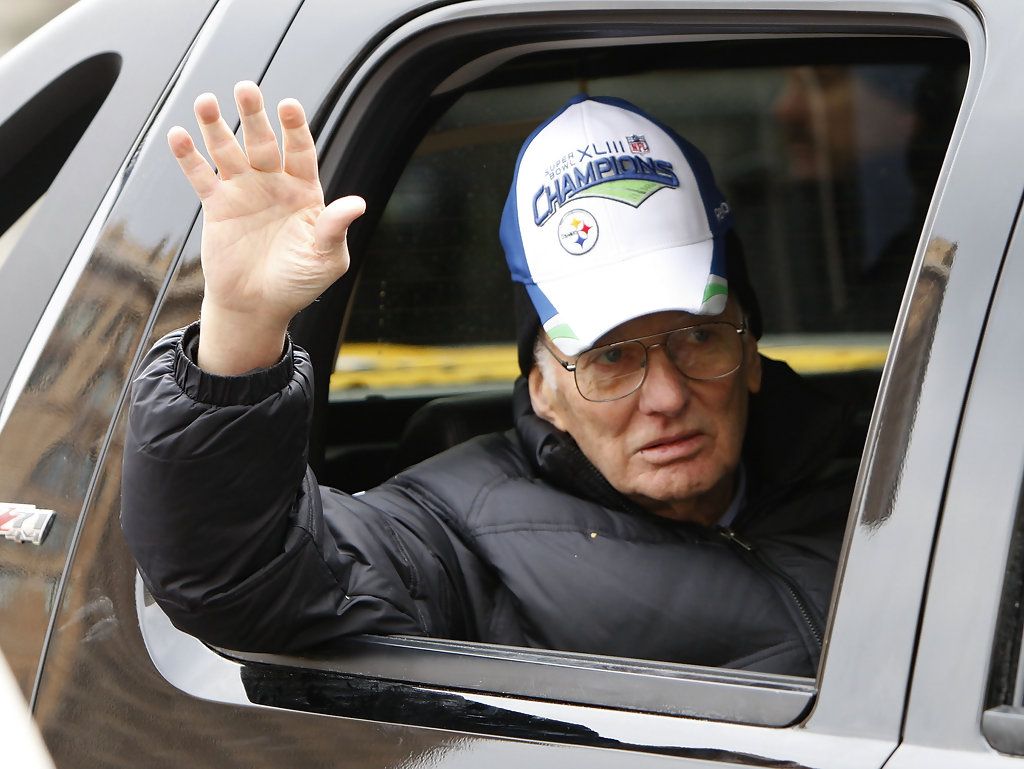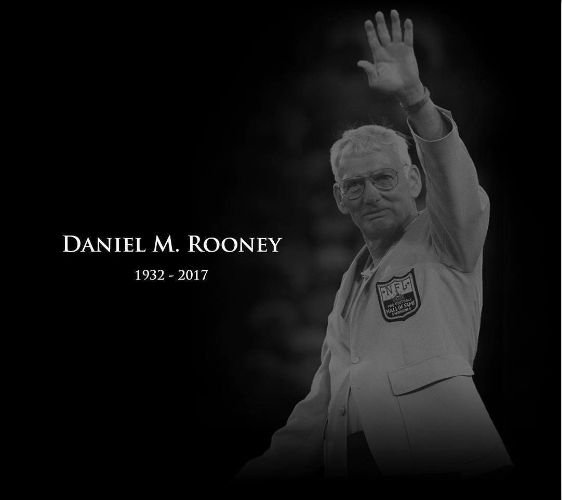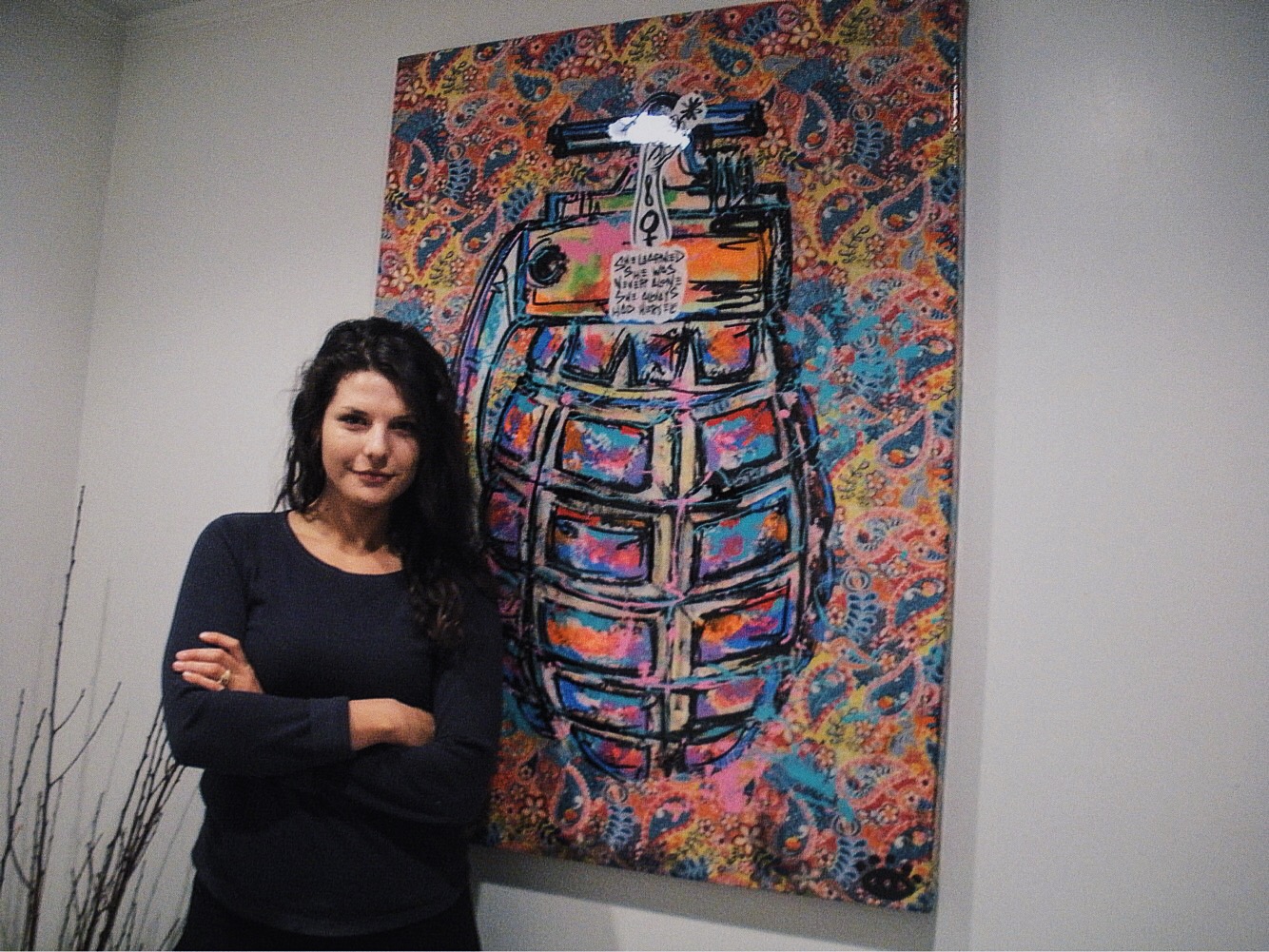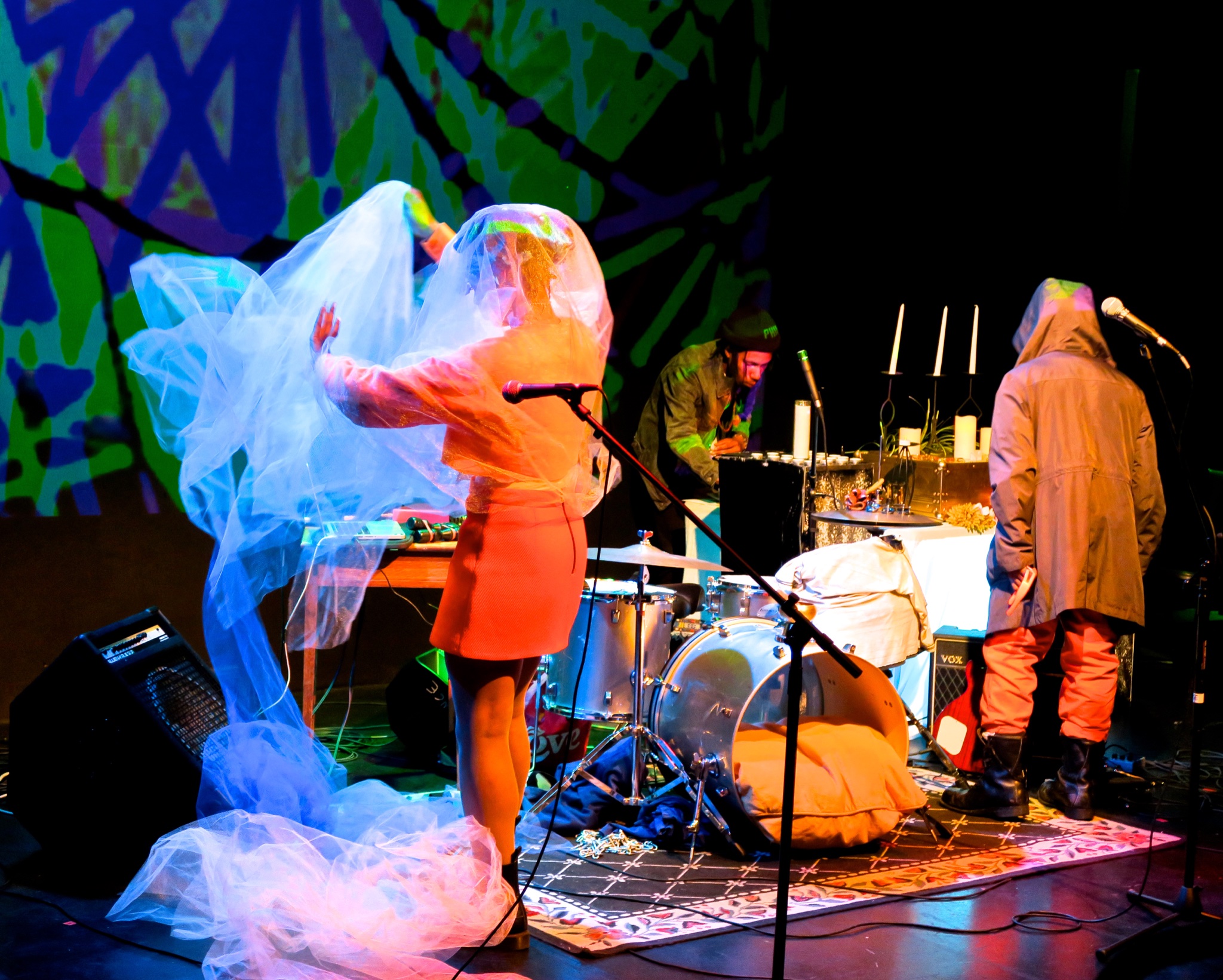Hebru Brantley painting his Flyboy mural - photograph by Alex Young
"World class" art displays minutes outside of Pittsburgh at the corner of Wallace Avenue and Pitt Street in Wilkinsburg, Pa.
Renowned visual artist Hebru Brantley of Chicago initially came to Pittsburgh for his "I Wish I Knew (How It Felt To Be Free)" exhibit last May. Inside the city's August Wilson Center for African American Culture, he exhibited his Flyboy sculptures and paintings, which reflect the disenfranchised youth's adventure and imagination. According to Marqui Lyons, the program manager at the Pittsburgh Cultural Trust who brought Brantley to the city, "I Wish I Knew (How It Felt To Be Free)" attracted 10,000 people to the exhibit from May to July.
Now, people can travel to Wilkinsburg to see Brantley's new Flyboy mural that serves as a mark of talent and community enrichment.
The effort of the Cultural Trust and the Wilkinsburg Arts Commission to bring a permanent Brantley piece to the city "celebrates work by African Americans and improves the neighborhood," developer Michael Polite said during the mural's unveiling on Friday morning.
Add Brantley's new mural in Pittsburgh to his list of public and private works that he's been recognized for, like another mural in Detroit, an ad for Cadillac, or his exhibit in Switzerland.
At the unveiling ceremony, Brantley spoke from his cherry picker crane while putting the finishing touches on his art. He told a story about how the day before a young black boy walked down Wallace Ave., and slowed to stare at the painting of a black boy flying through the air like a superhero. Brantley saw the boy "connect" with Flyboy, a symbol of encouragement. "The mural in Wilkinsburg depicts a black kid traveling safely through the city," he said.
Brantley's work promotes inspiration because Flyboy supports young kids' identity and "what it means to fly in your imagination." Overall, Brantley said he is blessed to shift the narrative in Pittsburgh and "uplift people."
Hebru Brantley's Flyboy
501 Wallace Avenue
Pittsburgh, PA 15221


